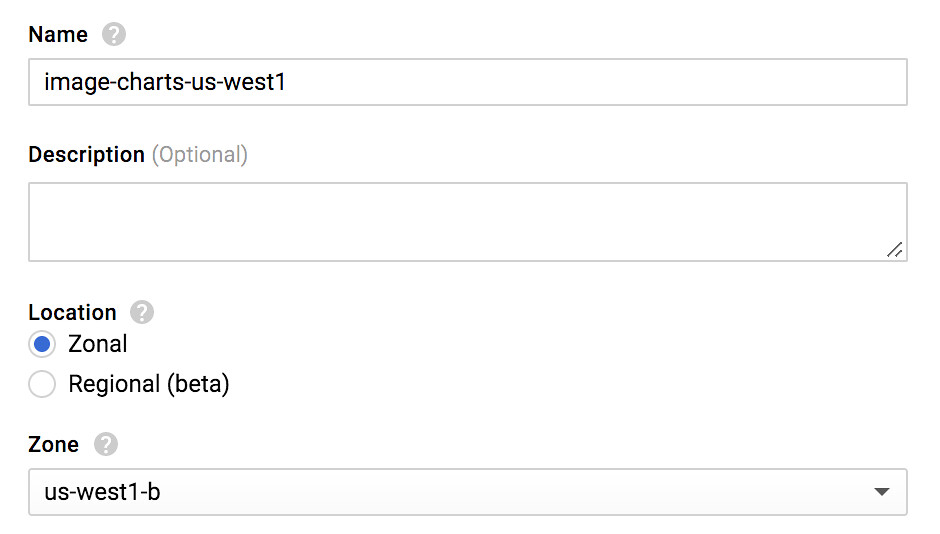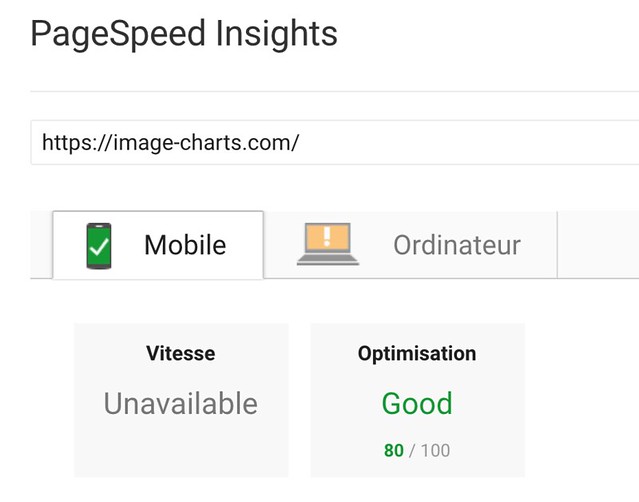Who doesn't want to spread one of its SaaS across continents? I finally had the opportunity to do it for my Image-Charts SaaS!
Image-charts was at first hosted on a Kubernetes cluster in europe-west Google Cloud Engine region and it was kind of an issue considering where our real users where (screenshot courtesy of Cloudflare DNS traffic):

As we can see, an important part of our traffic come from the US zone. Good news, it was time to try multi-region kubernetes. Here is a step by step guide on how to do it.
New Kubernetes cluster region on GCE
First thing first, let's create a new kubernetes cluster in us-west coast:

You should really (really) enable the preemptible nodes feature. Why? Because you get chaos engineering for free and continuously test your application architecture and configuration for robustness! Preemptible VM means that cluster nodes won't last more than 24 hours and good news : I observed cluster cost reduction by two.

Get a static IP from GCE
Next we need to create a new IP address on GCE. We will associate this IP to our kubernetes service so it will always stay with a static IP.
gcloud compute addresses create image-charts-us-west1 --region us-west1
Wait for it...
gcloud compute addresses list NAME REGION ADDRESS STATUS image-charts-europe-west1 europe-west1 35.180.80.101 RESERVED image-charts-us-west1 us-west1 35.180.80.100 RESERVED
Kubernetes YAML
The above app YAML defines multiple Kubernetes objects: a namespace (app-ns), a service that will give access to our app from outside (my-app-service), our app deployment object (my-app-deployment), auto-scaling through horizontal pod autoscaler and finally a pod disruption budget for our app.
# deploy/k8s.yaml
apiVersion: v1
kind: Namespace
metadata:
name: app-ns
---
apiVersion: v1
kind: Service
metadata:
labels:
app: my-app
zone: __ZONE__
name: my-app-service
namespace: app-ns
spec:
type: NodePort
ports:
- name: "80"
port: 80
targetPort: 8080
protocol: TCP
selector:
app: my-app
type: LoadBalancer
loadBalancerIP: __IP__
---
apiVersion: extensions/v1beta1
kind: Deployment
metadata:
namespace: app-ns
name: my-app-deployment
labels:
app: my-app
spec:
replicas: 3
# how much revision history of this deployment you want to keep
revisionHistoryLimit: 2
strategy:
type: RollingUpdate
rollingUpdate:
# specifies the maximum number of Pods that can be unavailable during the update
maxUnavailable: 25%
# specifies the maximum number of Pods that can be created above the desired number of Pods
maxSurge: 200%
template:
metadata:
labels:
app: my-app
spec:
affinity:
podAntiAffinity:
preferredDuringSchedulingIgnoredDuringExecution:
- weight: 100
podAffinityTerm:
topologyKey: "kubernetes.io/hostname"
labelSelector:
matchExpressions:
- key: app
operator: In
values:
- my-app
restartPolicy: Always
containers:
- image: __IMAGE__
name: my-app-runner
resources:
requests:
memory: "100Mi"
cpu: "1"
limits:
memory: "380Mi"
cpu: "2"
# send traffic when:
readinessProbe:
httpGet:
path: /_ready
port: 8081
initialDelaySeconds: 20
timeoutSeconds: 4
periodSeconds: 5
failureThreshold: 1
successThreshold: 2
# restart container when:
livenessProbe:
httpGet:
path: /healthz
port: 8081
initialDelaySeconds: 20
timeoutSeconds: 2
periodSeconds: 2
# if we just started the pod, we need to be sure it works
# so it may take some time and we don't want to rush things up (thx to rolling update)
failureThreshold: 5
successThreshold: 1
ports:
- name: containerport
containerPort: 8080
- name: monitoring
containerPort: 8081
---
apiVersion: autoscaling/v1
kind: HorizontalPodAutoscaler
metadata:
name: my-app-hpa
namespace: app-ns
spec:
scaleTargetRef:
apiVersion: extensions/v1beta1
kind: Deployment
name: my-app-deployment
minReplicas: 3
maxReplicas: 5
targetCPUUtilizationPercentage: 200
---
apiVersion: policy/v1beta1
kind: PodDisruptionBudget
metadata:
name: my-app-pdb
namespace: app-ns
spec:
minAvailable: 2
selector:
matchLabels:
app: my-app
Some things of note:
__IMAGE__, __IP__ and __ZONE__ will be replaced during the gitlab-ci deploy stage (see continuous delivery pipeline section).
kind: Service # [...] type: LoadBalancer loadBalancerIP: __IP__
type: LoadBalancer and loadBalancerIP tell kubernetes to creates a TCP Network Load Balancer (the IP must be a regional one, just as we did).
It's always a good practice to split up monitoring and production traffic that's why monitoring is on port 8081 (for liveness and readiness probes) and production traffic on port 8080.
Another good practice is to setup podAntiAffinity to tell kubernetes scheduler to place our app pod replica between available nodes and not put all our app pods on the same node.
And the good news is: this principle can be easily applied in Kubernetes thanks to requests and limits.
Finally we use PodDisruptionBudget policy to tell Kubernetes scheduler how to react when disruptions occurs (e.g. one of our preemptible node dies).
Continuous Delivery Pipeline
I used Gitlab-CI here because that's what power Image-charts & Redsmin deployments but it will work with other alternatives as well.
# gitlab.yaml
# https://docs.gitlab.com/ce/ci/yaml/
image: docker
# fetch is faster as it re-uses the project workspace (falling back to clone if it doesn't exist).
variables:
GIT_STRATEGY: fetch
# We use overlay for performance reasons
# https://docs.gitlab.com/ce/ci/docker/using_docker_build.html#using-the-overlayfs-driver
DOCKER_DRIVER: overlay
services:
- docker:dind
stages:
- build
- test
- deploy
# template that we can reuse
.before_script_template: &setup_gcloud
image: lakoo/node-gcloud-docker:latest
retry: 2
variables:
# default variables
ZONE: us-west1-b
CLUSTER_NAME: image-charts-us-west1
only:
# only
- /master/
before_script:
- echo "Setting up gcloud..."
- echo $GCLOUD_SERVICE_ACCOUNT | base64 -d > /tmp/$CI_PIPELINE_ID.json
- gcloud auth activate-service-account --key-file /tmp/$CI_PIPELINE_ID.json
- gcloud config set compute/zone $ZONE
- gcloud config set project $GCLOUD_PROJECT
- gcloud config set container/use_client_certificate False
- gcloud container clusters get-credentials $CLUSTER_NAME
- gcloud auth configure-docker --quiet
after_script:
- rm -f /tmp/$CI_PIPELINE_ID.json
build:
<<: *setup_gcloud
stage: build
retry: 2
script:
- docker build --rm -t ${DOCKER_REGISTRY}/${PACKAGE_NAME}:${CI_COMMIT_REF_NAME}-${CI_COMMIT_SHA} .
- mkdir release
- docker push ${DOCKER_REGISTRY}/${PACKAGE_NAME}:${CI_COMMIT_REF_NAME}-${CI_COMMIT_SHA}
test:
<<: *setup_gcloud
stage: test
coverage: '/Lines[^:]+\:\s+(\d+\.\d+)\%/'
retry: 2
artifacts:
untracked: true
expire_in: 1 week
name: "coverage-${CI_COMMIT_REF_NAME}"
paths:
- coverage/lcov-report/
script:
- echo 'edit me'
.job_template: &deploy
<<: *setup_gcloud
stage: deploy
script:
- export IMAGE=${DOCKER_REGISTRY}/${PACKAGE_NAME}:${CI_COMMIT_REF_NAME}-${CI_COMMIT_SHA}
- cat deploy/k8s.yaml | sed s#'__IMAGE__'#$IMAGE#g | sed s#'__ZONE__'#$ZONE#g | sed s#'__IP__'#$IP#g > deploy/k8s-generated.yaml
- kubectl apply -f deploy/k8s-generated.yaml
- echo "Waiting for deployment..."
- (while grep -v "successfully" <<<$A]; do A=`kubectl rollout status --namespace=app-ns deploy/my-app-deployment`;echo "$A\n"; sleep 1; done);
artifacts:
untracked: true
expire_in: 1 week
name: "deploy-yaml-${CI_COMMIT_REF_NAME}"
paths:
- deploy/
deploy-us:
<<: *deploy
variables:
ZONE: us-west1
CLUSTER_NAME: image-charts-us-west1
IP: 35.180.80.100
deploy-europe:
<<: *deploy
variables:
ZONE: europe-west1
CLUSTER_NAME: image-charts-europe-west1
IP: 35.180.80.101
Here are the environment variables to setup in Gitlab-CI pipeline settings UI:

DOCKER_REGISTRY (e.g. eu.gcr.io/project-100110): container registry to use, easiest way is to leverage GCE container registry.
GCLOUD_PROJECT (e.g. project-100110): google cloud project name.
GCLOUD_SERVICE_ACCOUNT: a base64 encoded service account JSON. When creating a new service account on GCE console you will get a JSON like this:
{
"type": "service_account",
"project_id": "project-100110",
"private_key_id": "1000000003900000ba007128b770d831b2b00000",
"private_key": "-----BEGIN PRIVATE KEY-----\nMIIEvgIBADANBgkqhkiG9w0BAQE\nhOnLxQa7qPrZFLP+2S3RaSudsbuocVo4byZH\n5e9gsD7NzsD/7ECJDyInbH8+MEJxFBW/yYUX6XHM/d\n5OijyIdA4+NPo6KpkJa2WV8I/KPtoNLSK7d6oRdEAZ\n7ECJDyInbH8+MEJxFBW/yYUX6XHM/d\n5OijyIdA4+NPo6KpkJa2WV8I/KPtoNLSK7d6oRdEAZ\n7ECJDyInbH8+MEJxFBW/yYUX6XHM/d\n5OijyIdA4+NPo6KpkJa2WV8I/KPtoNLSK7d6oRdEAZ\n7ECJDyInbH8+MEJxFBW/yYUX6XHM/d\n5OijyIdA4+NPo6KpkJa2WV8I/KPtoNLSK7d6oRdEAZ\n7ECJDyInbH8+MEJxFBW/yYUX6XHM/d\n5OijyIdA4+NPo6KpkJa2WV8I/KPtoNLSK7d6oRdEAZ\n7ECJDyInbH8+MEJxFBW/yYUX6XHM/d\n5OijyIdA4+NPo6KpkJa2WV8I/KPtoNLSK7d6oRdEAZ\n7ECJDyInbH8+MEJxFBW/yYUX6XHM/d\n5OijyIdA4+NPo6KpkJa2WV8I/KPtoNLSK7d6oRdEAZ\n7ECJDyInbH8+MEJxFBW/yYUX6XHM/d\n5OijyIdA4+NPo6KpkJa2WV8I/KPtoNLSK7d6oRdEAZ\n7ECJDyInbH8+MEJxFBW/yYUX6XHM/d\n5OijyIdA4+NPo6KpkJa2WV8I/KPtoNLSK7d6oRdEAZ\n7ECJDyInbH8+MEJxFBW/yYUX6XHM/d\n5OijyIdA4+NPo6KpkJa2WV8I/KPtoNLSK7d6oRdEAZ\n7ECJDyInbH8+MEJxFBW/yYUX6XHM/d\n5OijyIdA4+NPo6KpkJa2WV8I/KPtoNLSK7d6oRdEAZ\n\n-----END PRIVATE KEY-----\n",
"client_email": "gitlab@project-100110.iam.gserviceaccount.com",
"client_id": "118000107442952000000",
"auth_uri": "https://accounts.google.com/o/oauth2/auth",
"token_uri": "https://accounts.google.com/o/oauth2/token",
"auth_provider_x509_cert_url": "https://www.googleapis.com/oauth2/v1/certs",
"client_x509_cert_url": "https://www.googleapis.com/robot/v1/metadata/x509/gitlab%40project-100110.iam.gserviceaccount.com"
}
To make it work on our CI, we need to transform it to base64 in order to inject it as an environment variable.
cat service_account.json | base64
PACKAGE_NAME (e.g. my-app): container image name.
The YAML syntax below defines a template...
.before_script_template: &setup_gcloud
... that we can then reuse with:
<<: *setup_gcloud
I'm particularly fond of the one-liner below that makes gitlab-ci job wait for deployment completion:
(while grep -v "successfully" <<<$A]; do A=`kubectl rollout status --namespace=app-ns deploy/my-app-deployment`;echo "$A\n"; sleep 1; done);
One line to wait for kubernetes rolling-update to complete, fits perfectly inside @imagecharts Continuous Deployment Pipeline pic.twitter.com/9Q6gRwdMiX
— François-G. Ribreau (@FGRibreau) April 9, 2018
It's so simple and does the job.
Note: the above pipeline only runs when commits are pushed to master, I removed other environments code for simplicity.
The important part is:
deploy-us:
<<: *deploy
variables:
ZONE: us-west1
CLUSTER_NAME: image-charts-us-west1
IP: 35.180.80.100
This is where the magic happens, this job includes shared deploy job template (that itself includes setup_gcloud template) and specify three variables: the ZONE, CLUSTER_NAME and the IP address to expose) that alone is sufficient to make our pipeline deploy to multiple Kubernetes cluster on GCE. Bonus: we store the generated YAML as an artifact for future inspections.
Pushing our code you should have something like this:
Now lets connect to one of our kubernetes cluster. Tips: to easily switch between kubectl context I use kubectx

# on us-west1 cluster kubectl get service/my-app-service -w --namespace=image-charts NAME TYPE CLUSTER-IP EXTERNAL-IP PORT(S) AGE my-app-service LoadBalancer 10.59.250.180 35.180.80.100 80:31065/TCP 10s
From this point you should be able to access both public static IP with curl.
Configuring Geo-DNS
Same warning as before, I used Cloudflare for the geo-dns part but you could use another provider. It costs $25/mo to get basic geo-dns load-balancing between region: basic load balancing ($5/mo), up to 2 origin servers ($0/mo), check every 60 seconds ($0/mo), check from 4 regions ($10/mo), geo routing ($10/mo).
Once activated, create a two pools (one per region using the static IP we just created):

... then create a monitor and finally the load-balancer that distribute load based on the visitor geolocation.

And... we're done 🎉





